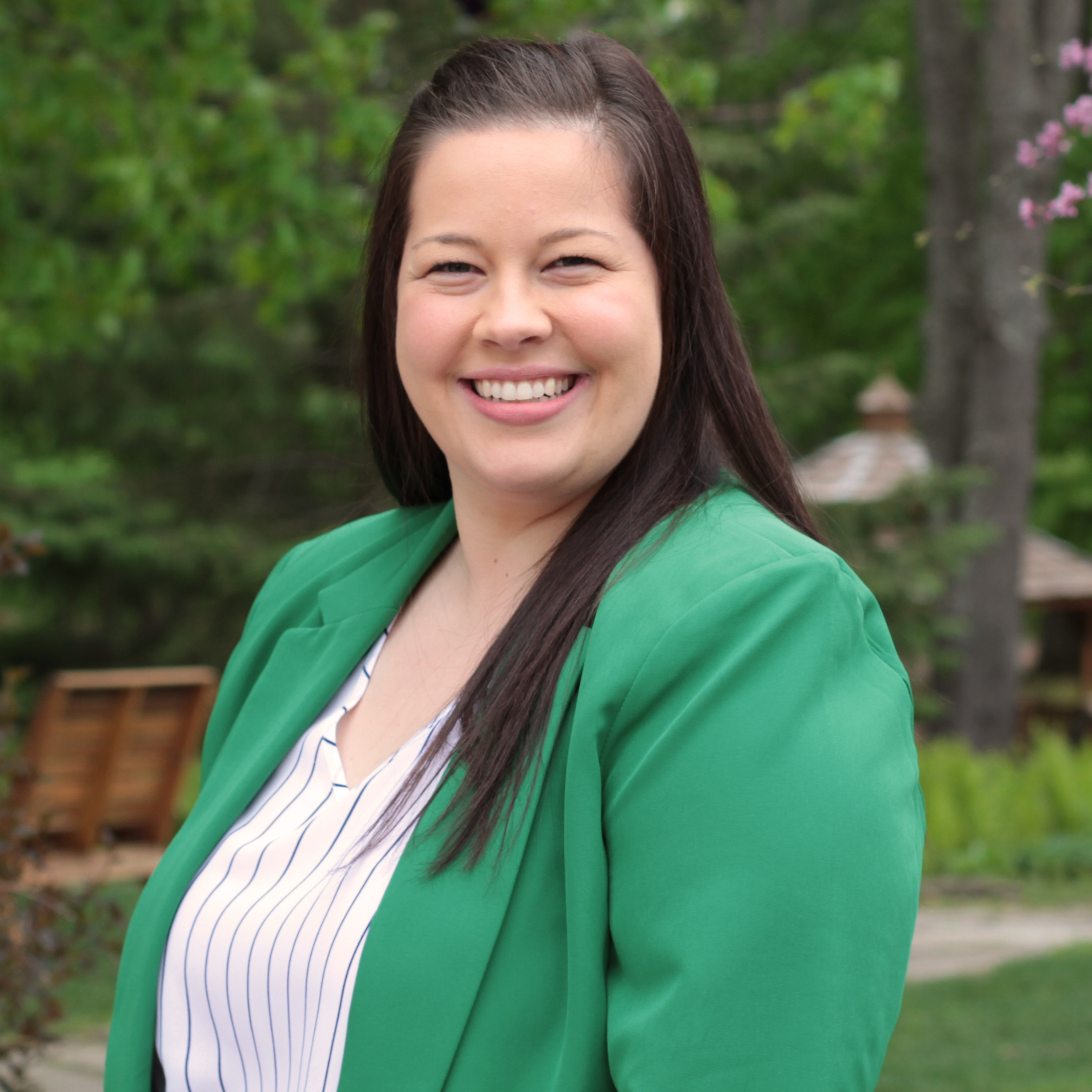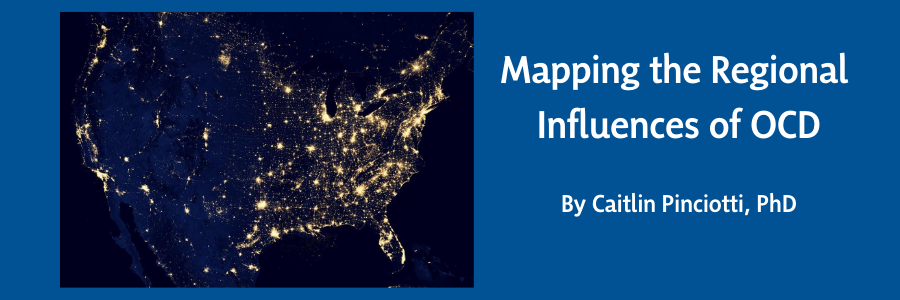By Caitlin Pinciotti, PhD
“OCD latches onto what you value” is a phrase most of us have probably heard or said in OCD treatment. It is why we believe that religious scrupulosity OCD is more likely to afflict someone with strong religious principles, why perinatal OCD is more likely to afflict someone who is a devoted parent, and why harm OCD is more likely to afflict someone who would never even harm a fly. OCD themes do not come from nowhere. They develop out of a deep fear that the worst-case scenario for each individual person — committing an unforgivable sin, failing to protect a beloved baby from imminent harm, hurting a loved one intentionally — could come true.
If we think of intrusive thoughts like insects annoyingly buzzing around, we can visualize some of the pests getting stuck in a sticky spider’s web while others do not. Paul Salkovskis proposed that certain themes get “stuck” in OCD because of the response they cause. Research has suggested that most, if not all, people experience intrusive thoughts about a wide range of horrible possibilities, and what separates people with and without OCD is what happens in response to the intrusive thought. Someone without OCD who experiences an intrusive thought of a hit-and-run might recoil at the gruesome possibility, shake it off, and continue about their day, perhaps completely forgetting they ever had the thought in the first place. But someone with OCD (or with the predisposition to develop OCD) might become anxious and try to make sense of the thought. “Why did I just have that thought?” “Did I actually hit someone?” “Am I more likely to hit someone now that I’ve thought it?” “What kind of deranged person am I for thinking about hitting someone?” It is the meaning given to the intrusive thought, and the subsequent urge to do something about it (e.g., use a compulsion), that increases the intensity of the thought, the likelihood it will pop up again, and the reliance on compulsions and avoidance to prevent the thought from popping up or prevent the feared outcome from happening. That is why we believe certain themes get “stuck” in the spider’s web for different people. The intrusive thought’s theme carries some important personal meaning that stems from the values that a person holds dear — and makes the thought feel particularly dangerous.
But where do our values come from? Values can develop based on how we were raised, our religious or spiritual communities, our political beliefs and those of people who surround us, our experiences with different groups of people, how we are treated based on the identities we hold, traumas that we have endured, and even the region of the country in which we live — the latter of which can inform all of the above, and more.
As a researcher and clinician, I often notice patterns in the clients I work with that haven’t yet been researched and become inspired to try to answer these questions on a larger scale. In my work treating adults with OCD from all over the country, I started to wonder whether we could map the regional influences of OCD. For example: Are people who live in more socially conservative evangelical Christian states more likely to struggle with scrupulosity OCD? Are people who live in more LGBTQI+-restrictive states more likely to struggle with sexual orientation or gender-themed OCD? Are people who live in more socially liberal, urban areas more likely to struggle with a fear of being racist? Are people who live in more economically disadvantaged areas more likely to struggle with obsessions related to contamination, homelessness, or economic hardship? How common are some of these themes, for which there is very little existing research? Does their prevalence vary across different parts of the country? Research from over a decade ago found that 10-12% of people with OCD had at some point obsessed about their sexual orientation (Williams & Farris, 2011), but it’s not known whether the prevalence of this theme has increased since then, nor do we know the prevalence of a variety of other identity-related themes (e.g., gender identity obsessions), or how these might cluster in different parts of the country and among different sociodemographic groups.
The National OCD Survey aims to answer these and many more questions. In collaboration with Eric Storch, Wayne Goodman, and others across the country, I developed a brief online survey that will help us understand the sociocultural and regional influences of OCD in the United States. Our study team at Baylor College of Medicine has worked tirelessly over the last year to reach adults with OCD living in the United States to complete our survey and share it with others, sending thousands of emails, posting hundreds of flyers all over the country, and spreading the word to other clinicians and people with lived experience every chance we get. The magnitude of our research questions requires that we have participation from several thousand people. We are motivated by care for those struggling with OCD and our intentionality in ensuring that we have represented people from all 50 US states as best as we can. Once the study is complete, we will be able to map out (literally) OCD themes across the country, and answer currently unresolved questions regarding the sociocultural influences of OCD themes and severity.
If you are living with OCD in the US, please consider completing our 10-minute anonymous survey to help us better understand these important yet understudied influences of OCD.
You are eligible for the study if you are 18 years of age or older, living in the US, and believe that you have ever had OCD (even if it’s not a current struggle for you, or you have never been formally diagnosed or treated).
Adults of all ages, identities, regions, experiences, and OCD themes are welcome and encouraged to participate. The anonymous survey can be accessed at www.tinyurl.com/57U9Y3PM or by using the QR code below, and you can email NationalOCDSurvey@bcm.edu with questions.

Please note that we are unfortunately unable to offer compensation for your participation and are immensely appreciative of those who have volunteered a few moments of their time to support this study.
I am touched by the number of people in our community who ask how they can help others by participating in OCD research. Every day, we learn more and more about OCD because of people like you who volunteer their time to support research efforts and the IOCDF. The OCD community is genuinely the most generous community I’ve ever been a part of, and I am so grateful to those of you who will consider participating today. Each of your experiences and perspectives are important, valid, and needed.
I look forward to sharing these findings with you all at a future IOCDF Conference. Thank you for considering being part of this important study.
Dr. Caitlin Pinciotti is a licensed clinical psychologist and assistant professor in the Menninger Department of Psychiatry and Behavioral Sciences at Baylor College of Medicine. She researches sociocultural and traumatic influences on OCD.
Questions about the National OCD Survey?
Contact NationalOCDSurvey@bcm.edu.

References: Williams, M. T., & Farris, S. G. (2011). Sexual orientation obsessions in obsessive–compulsive disorder: Prevalence and correlates. Psychiatry Research, 187(1-2), 156–159. https://doi.org/10.1016/j.psychres.2010.10.019


Leave a Reply